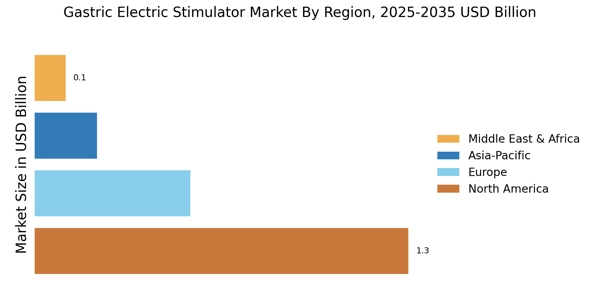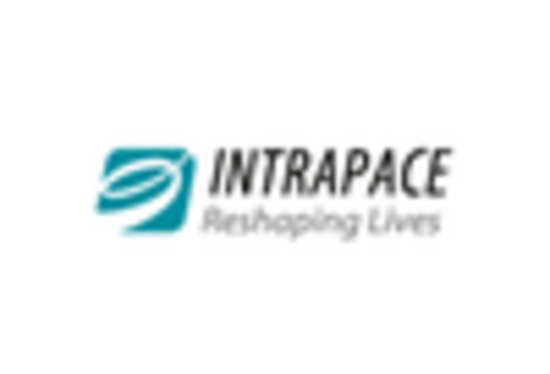Rising Prevalence of Obesity
The increasing prevalence of obesity is a primary driver for the Gastric Electric Stimulator Market. As obesity rates continue to rise, the demand for effective treatment options becomes more pressing. According to recent data, approximately 650 million adults are classified as obese, leading to a surge in related health issues such as diabetes and cardiovascular diseases. This growing health crisis has prompted healthcare providers to seek innovative solutions, including gastric electric stimulators, which offer a less invasive alternative to traditional weight loss surgeries. The Gastric Electric Stimulator Market is thus positioned to benefit from this trend, as more patients and healthcare professionals recognize the potential of these devices in managing obesity and improving overall health outcomes.
Regulatory Support for Innovative Therapies
Regulatory support for innovative therapies is playing a pivotal role in shaping the Gastric Electric Stimulator Market. Regulatory bodies are increasingly recognizing the need for effective obesity treatments and are streamlining approval processes for new devices. This supportive environment encourages manufacturers to invest in the development of gastric electric stimulators, knowing that they are likely to receive timely approvals. Recent trends indicate that the time taken for regulatory approvals has decreased, facilitating quicker market entry for new products. As a result, the Gastric Electric Stimulator Market is expected to experience accelerated growth, driven by the introduction of novel devices that meet the evolving needs of patients and healthcare providers.
Technological Innovations in Medical Devices
Technological advancements in medical devices are significantly influencing the Gastric Electric Stimulator Market. Innovations such as improved electrode designs, enhanced battery life, and advanced programming capabilities are making gastric electric stimulators more effective and user-friendly. These developments not only enhance patient compliance but also improve clinical outcomes. For instance, recent studies indicate that patients using advanced gastric electric stimulators experience greater weight loss and improved metabolic health compared to traditional methods. As technology continues to evolve, the Gastric Electric Stimulator Market is likely to see increased adoption rates, driven by both healthcare providers and patients seeking cutting-edge solutions for obesity management.
Growing Focus on Minimally Invasive Procedures
The shift towards minimally invasive procedures is a notable trend impacting the Gastric Electric Stimulator Market. Patients increasingly prefer treatments that involve less surgical intervention, reduced recovery times, and lower risks of complications. Gastric electric stimulators align well with this preference, offering a non-surgical option for weight management. The market data suggests that minimally invasive techniques are gaining traction, with a significant percentage of patients opting for these alternatives over traditional surgical options. This trend is expected to drive the growth of the Gastric Electric Stimulator Market, as more individuals seek effective yet less invasive solutions for obesity and related health issues.
Increased Investment in Obesity Treatment Research
The rising investment in research and development for obesity treatment is a crucial driver for the Gastric Electric Stimulator Market. Governments and private organizations are allocating substantial funds to explore innovative solutions for obesity management. This financial support is fostering advancements in gastric electric stimulation technology, leading to improved device efficacy and safety profiles. Recent reports indicate that funding for obesity-related research has seen a marked increase, reflecting a growing recognition of the obesity epidemic as a public health priority. Consequently, the Gastric Electric Stimulator Market stands to benefit from these investments, as new findings and technologies emerge to enhance treatment options for patients.


















Leave a Comment